Australia’s Old Growth – a colonial legacy
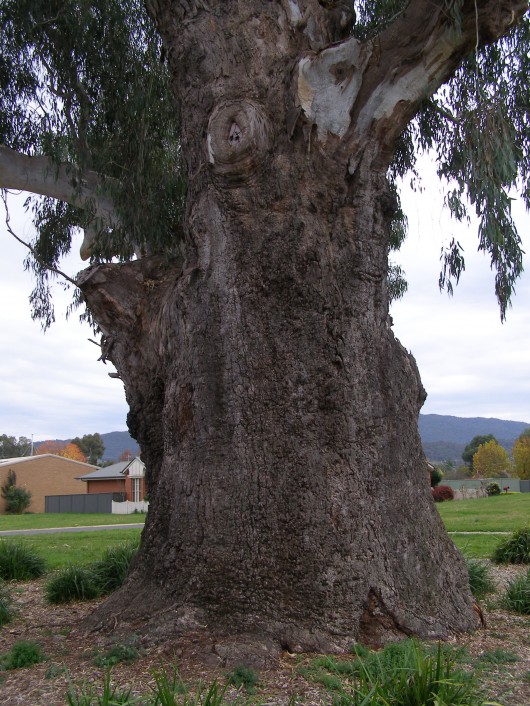 River Red Gum
(click image to enlarge)
River Red Gum
(click image to enlarge)
.
Play music by Australia’s David Hyams:
[Music source: ^http://www.milestogo.com.au/]
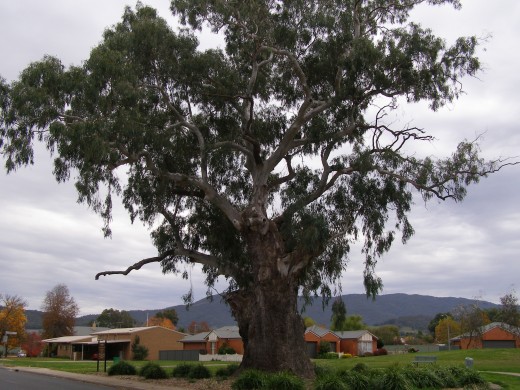 Myrtleford’s 200+ year old River Red Gum
(Eucalyptus camaldulensis)
Myrtleford’s 200+ year old River Red Gum
(Eucalyptus camaldulensis)
.
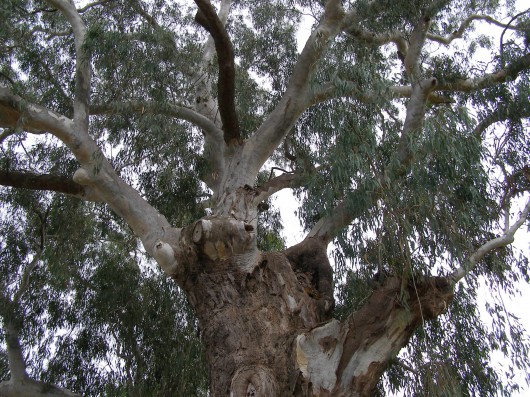 Native to riverine valleys particularly of heavy clay soils along river banks and on floodplains subject to frequent or periodic flooding across riverine northern Victorian and southern New South Wales.
Native to riverine valleys particularly of heavy clay soils along river banks and on floodplains subject to frequent or periodic flooding across riverine northern Victorian and southern New South Wales.
.
Most Australian trees, like native Australians, have otherwise been despised and slaughtered by Colonists…
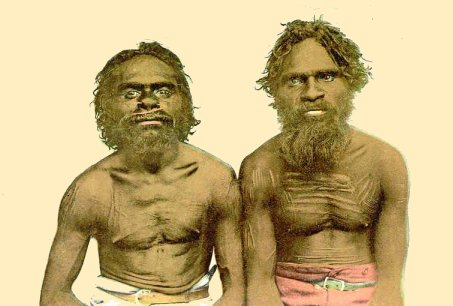 Indigenous Australians
Indigenous Australians
.
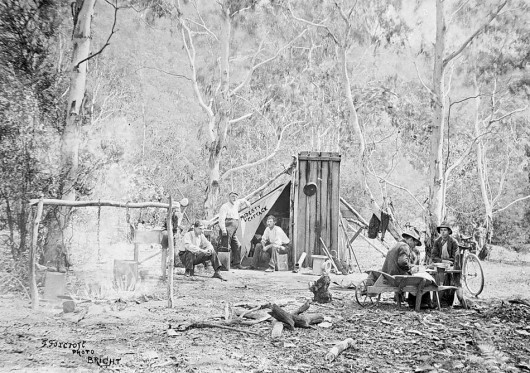 The township of Bright before the exotic trees.
In the 1890s when colonial miners exploited North East Victoria..
the Red Gum would have been just 80 years old.
.
The township of Bright before the exotic trees.
In the 1890s when colonial miners exploited North East Victoria..
the Red Gum would have been just 80 years old.
.
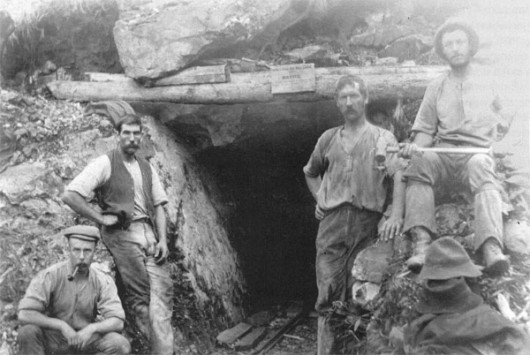 .
.
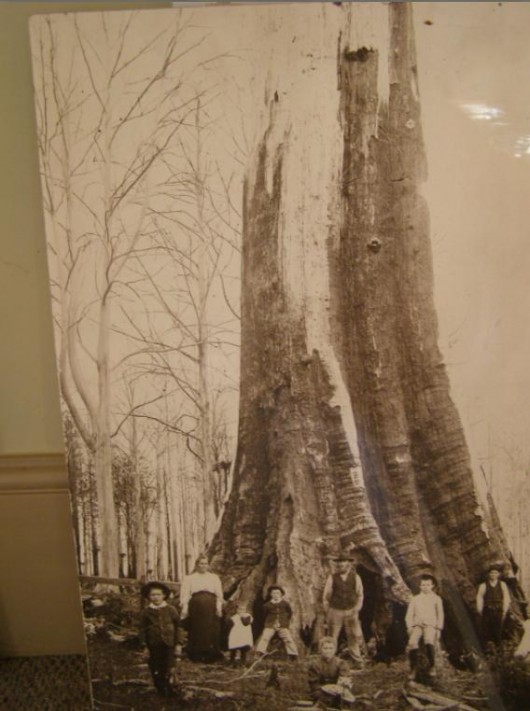 The ‘Penny Tree’
[Fumina, East Gippsland, Victoria, 1908]
The ‘Penny Tree’
[Fumina, East Gippsland, Victoria, 1908]
.
..”As a result of the devastating bush fires which raged through Gippsland some 18 months ago, this Settler in the Fumina district was unfortunate enough to lose his home, and afterwards took shelter in this big hollow tree.
The space available was enough for 2 large beds, tables, chairs and sundry other furniture. Under the deft fingers of “The Lady of the Tree” it soon transofrmed into a comfortable home for the Family, until eventually replaced by a 6 roomed home some time later.”
[Source: The Weekly Times, 1908]
.
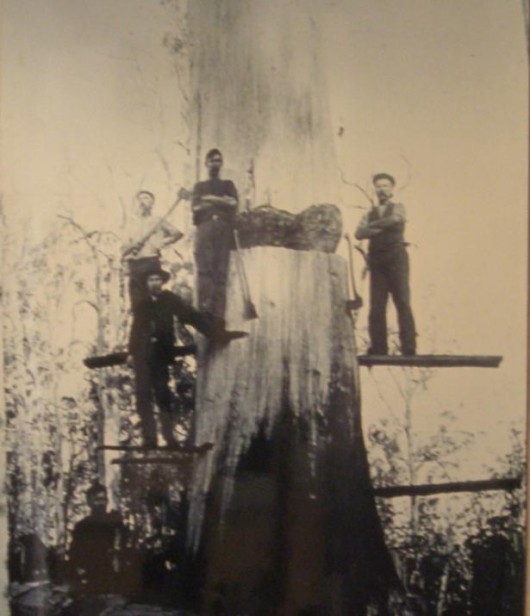 .
.
.
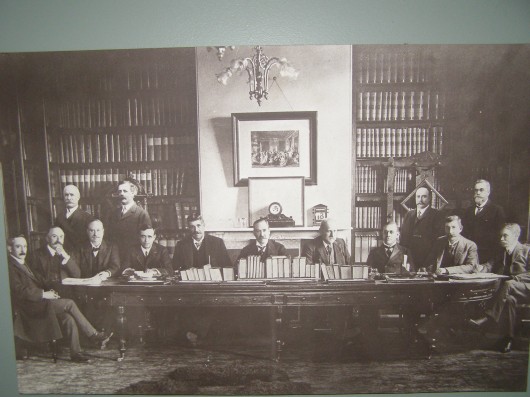 Victorian colonists driving ‘COLONIAL PROGRESS‘
(click image to enlarge)
Victorian colonists driving ‘COLONIAL PROGRESS‘
(click image to enlarge)
.
Tags: Australia's old growth, Bright, colonial progress, East Gippsland, Eucalyptus camaldulensis, Fumina District, Logging, Mnjambuta, Myrtleford, North East Victoria, Penny Tree, River Red Gums, The Big Tree
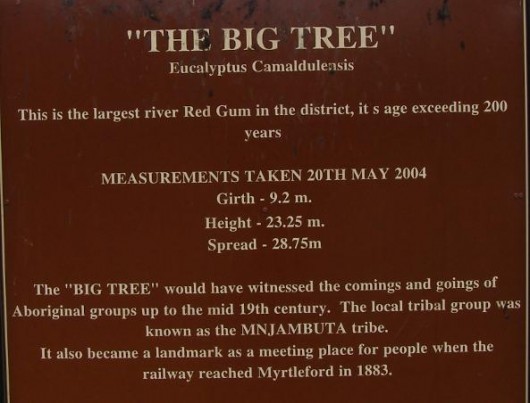
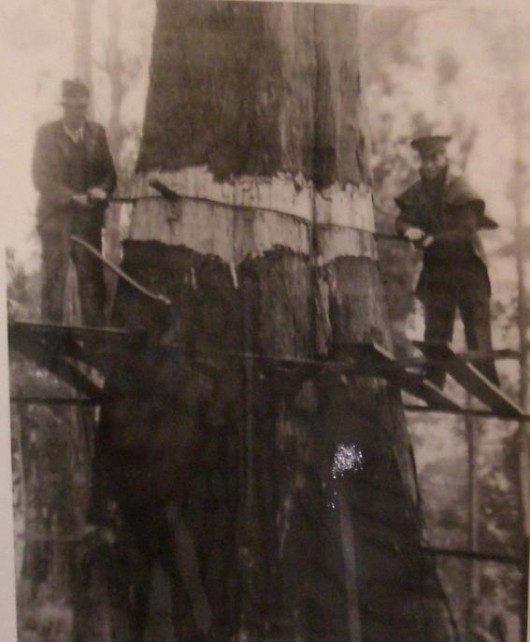






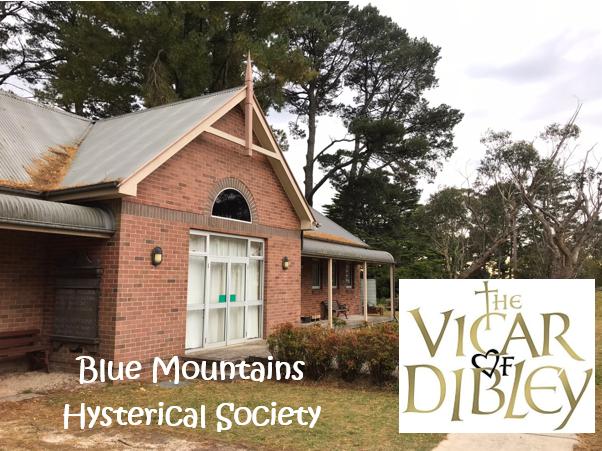

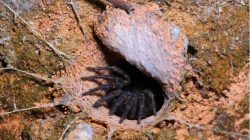

I hope that you suceed in keeping Cartage Australia out of the Blue Mountains.
We have the six axles here in Victoria and most believe that there should not be allowed on the roads. It’s been said that they get special treatment from VicRoads.
This again is an excellent article. The photographs express better than words the extent of the environmental damage we have done – it is so very true, what you say, that “Most Australian trees, like native Australians, have been despised and slaughtered by Colonists…”.
As Deborah Bird Rose points out in her book “Reports from a Wild Country: ethics for decolonization”, “settler societies are built on a dual war: a war against Nature and a war against the natives”(p.34) “starting with an initial premise that conquest was always meant to be complete, we know that the conquest of Indigenous peoples, like the conquest of Nature, was undertaken in a mode of replacement. From the first it was imagined as a project that would be finished when the replacement was fully accomplished” (p.2), and this still continues today with the difference that more and more people are fighting against it.